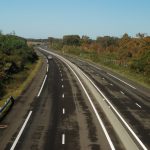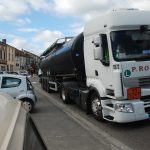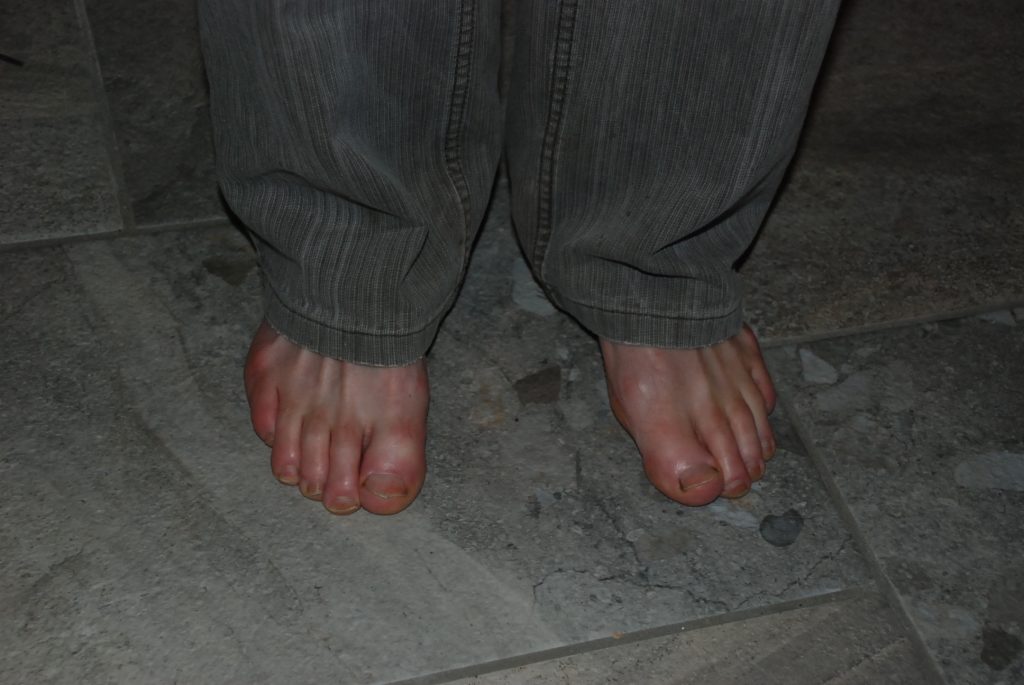-
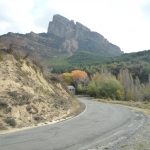
-
Monte Oroel
-
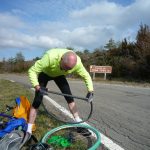
-
Puncture repair man
-
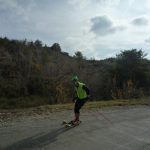
-
Not just for cyclists
-
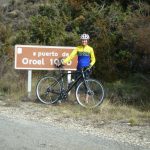
-
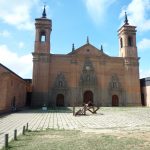
-
The new monastery
-
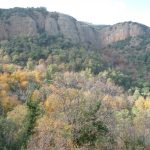
-
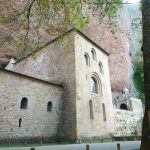
-
Monastery de San Juan de la Pena
-
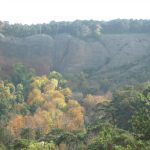
-
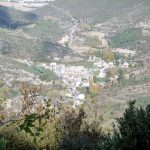
-
Santa Cruz, from the monastery
-
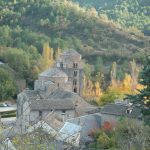
-
The church in Santa Cruz
-
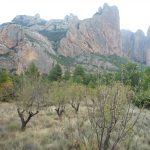
-
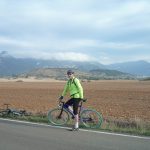
-
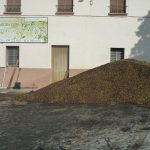
-
Olives!
-
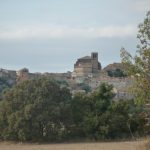
-
El Castillo de Loarre
-
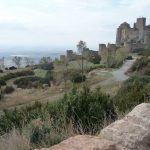
-
El Castillo de Loarre
It being half term and two of my students having cancelled their lessons for the week, it seemed an ideal opportunity to head off in the camper van. I wanted to practice my Spanish, so we set off for Jaca, not far over the border and from where we’d heard tell of a monastery built into a cliff face, within cycling distance. We wouldn’t be doing any serious riding, so we didn’t take our best bikes; it always feels a bit risky leaving them locked to the back of the van.
We arrived in Jaca on Halloween; every child in the town, and several of their mums, must have been out, dressed up and faces painted; all the shopkeepers had huge buckets of sweets for those doing “trick or treat”, it was so good natured and fun. Even the waitresses at the restaurant where we had dinner were dressed up.
The next morning we set off for the monastery; not long into the ride, the road turned up hill. It went up, and up…….. and up…….. till at last we reached the sign for the Puerto de Oroel, a mountain pass at 1080 metres (how had Nick not spotted that on the map!). And still it went up, to the new monastery on the top, from where we started dropping to the old monastery, which is amazing, and is indeed built into the face of a huge, overhanging cliff.We couldn’t get decent photos because of all the trees around, but there are some good photos at
https://www.google.fr/search?q=monastery+san+juan+de+la+pena&client=firefox-b&dcr=0&source=lnms&tbm=isch&sa=X&ved=0ahUKEwjwv_Snp63XAhWDWRoKHXsJDbwQ_AUICigB&biw=1280&bih=591&dpr=1.5#imgrc=eKLeBEuvVUi5QM:
I was really pleased when two groups of Spanish stopped me to ask if I’d really ridden all the way up there; more pleased that I understood what they’d said and that I could reply, than anything else, if I’m honest. The village of Santa Cruz de la Seros was at the bottom of the valley, so we set off there for a lovely lunch, really pleased that we’d done the ride this way round; the descent was so steep, I’d never have been able to ride up that!
The following day we went to Huesca, from where we thought we’d ride to the Castillo de Loarre about 35km away and a mostly flat ride. All went well till we reached the village of Bolea, about halfway; the village was a labyrinth with not a road sign in sight. We took a right turn that seemed to be heading in the right direction, but which soon petered out into dirt track, it was apparently the footpath for the pilgrimage of St Jacques de Compostelle. So back into the village centre, where I asked a man; “down there and turn right”, he said, but that was where we’d come from so I asked another; “right here, then left”. Better get a concensus, so I asked someone else; “I’m not from around here, you’d better ask in the bar”, which I did. Three locals all shook their heads when I said, with a lot of mime when I ran out of vocabulary, that we’d found the camino de St Jacques, but wanted a proper road to Loarre; “no, there isn’t one; if you want to see the castle, you have to take the track”. This seemed a little unlikely as there was a road, with a number, on our map; but my Spanish certainly isn’t good enough to argue. I reported back to Nick and we’d almost decided to head back to Huesca when we spotted a town map on a wall; clearly marked was a road to Loarre. My three friends from the bar were walking up the road; “look, this is the road we’re looking for” I said, pointing to the map. More shaking of heads; “no, it doesn’t exist any more, you have to take the track”. Unconvinced, we followed the map; there was a perfectly good road all the way to Loarre and if we hadn’t taken the first right turn, we’d have found it, no problem; but i wouldn’t have had as much Spanish practice!
The last 4km to the castle were steeply uphill; I really wished I’d taken a lighter bike with lower gears, but arriving at the top it was worth every minute; the castle was stunning and the views fantastic, as we sat in the sunshine, feasting on our picnic of tortilla followed by sheep’s cheese and what was called date and walnut loaf – a 10cm circle, about 2cm thick, of neat dates and walnuts, squashed together – delicious!
We sampled a couple of tapas bars in Huesca, they were superb, then loaded the van up with olive oil, brandy, wine, oranges and more date and walnut loaf, before heading home. It was only four days, but felt like a real break.

